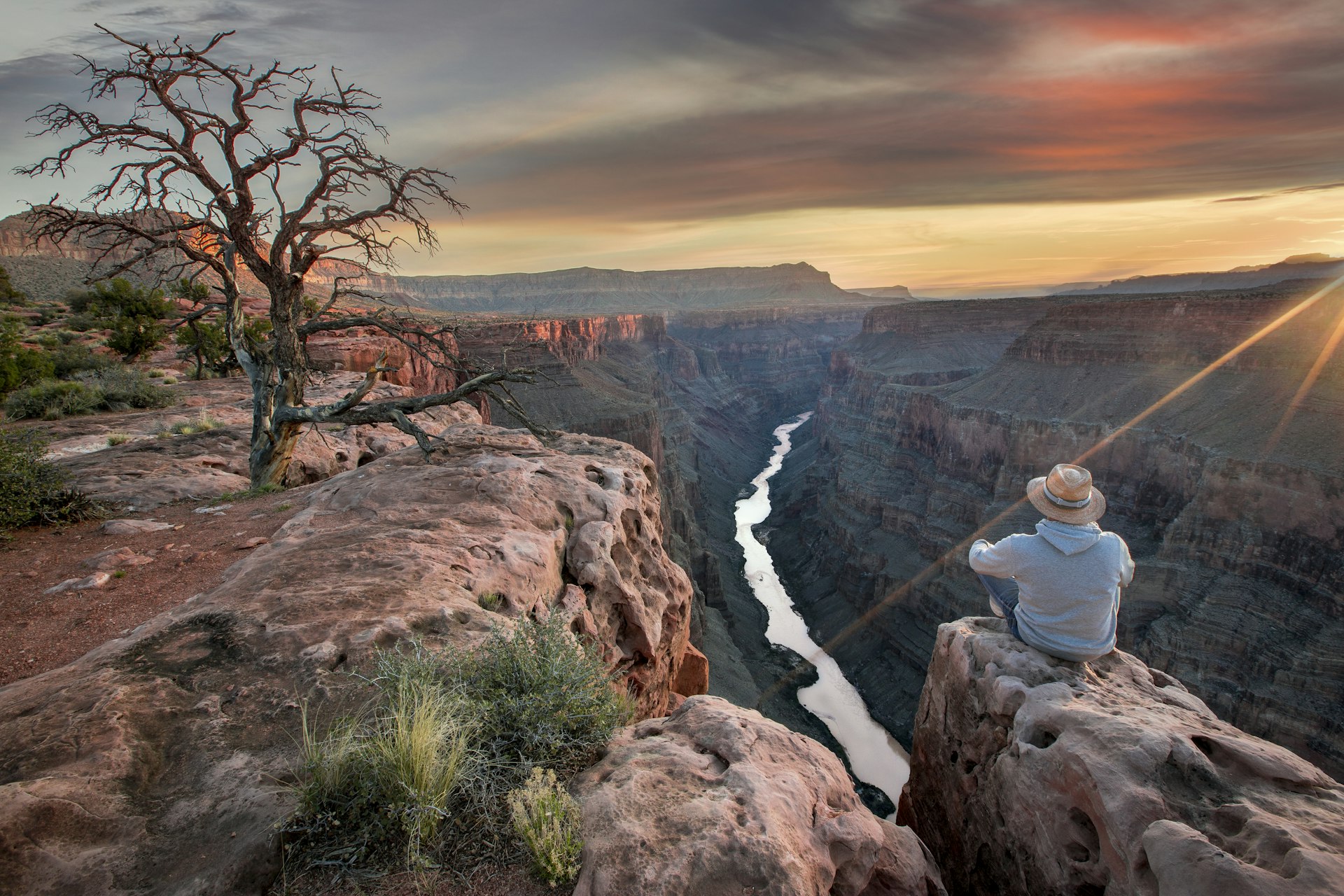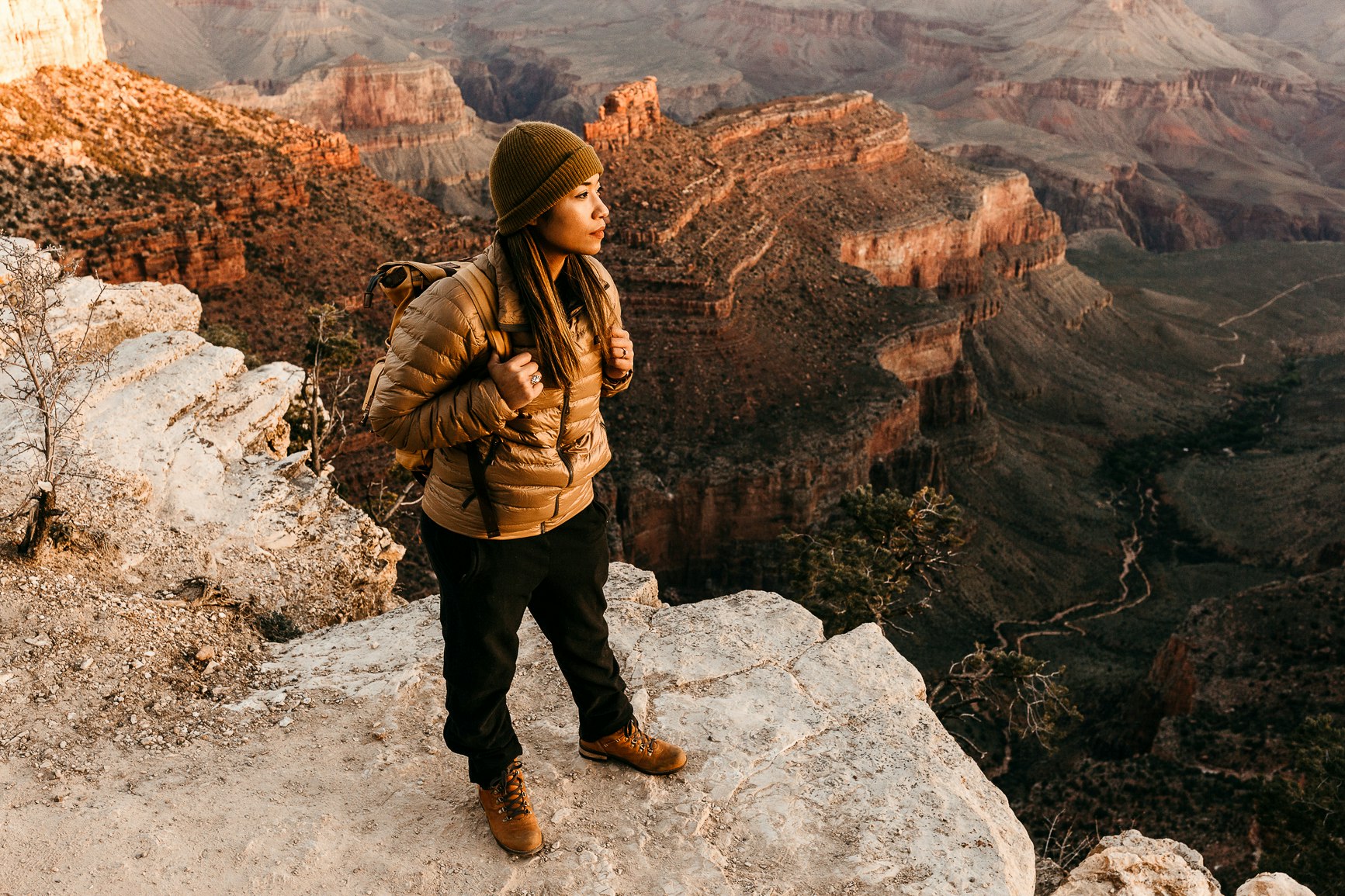There is never a bad time to explore the deep and rippled beauty of Grand Canyon National Park. But depending on the nature of your trip – be it a rugged multi-day hike through jagged switchbacks and river ravines, a spot of family camping, or a quick budget-friendly adventure – when you visit can make all the difference.
When planning the perfect Grand Canyon National Park itinerary, the factors to consider are as expansive as the rocky vistas that await your arrival. From monsoons to relentless desert heat via peak visitor numbers, here’s everything you need to know about the best times to visit.
March through May is the best time to beat the summer heat
The Grand Canyon itself is approximately 277 miles long and more than a mile deep and the bulk of the national park falls within the Sonoran Desert. With this desert climate comes an incredible range of temperatures. During summer (June–August), highs can peak at 100-110°F (37.7-43.3°C). In December and January, the mercury rarely creeps above 60°F (15.5°C).
For more manageable temperatures, March through May is the best time to visit. This is when highs hover in the 75-90°F (23-32°C) and lows seldom dip below 50 (10°C) degrees. Keep an eye on weather forecasts, though. Late winter storms do occur and can blanket the canyon’s trails and roads in snow.
March also marks the beginning of rafting season on the Colorado River. Pre-book your river adventures well ahead of time. The canyon’s wildlife – including deer, mules, and bighorn sheep – also emerges from hibernation around this time, making for a visual spectacle.

June through August is the best time to experience the North Rim
The summer months are peak season throughout Grand Canyon National Park as families take advantage of the warmer weather and their kids’ summer breaks. While the masses are hard to avoid along the super-popular South Rim, summertime is the best time of year to experience the lesser-trafficked North Rim.
The North Rim portion of the park is open seasonally from mid-May through mid-October. Its roads are near impassable in the winter due to snow and ice. During the summer months, however, the North Rim is great for scenic drives and camping. It’s also a fab time to hike the 10-mile-long Widforss Trail where forests of white fir and blue spruce provide some cooling shade.
Wherever your summer trip to Grand Canyon National Park takes you, keep an eye on the weather forecasts. July and August are considered the monsoon season and life-threatening floods can emerge in a matter of minutes.
September through October is the best time for avoiding crowds
Grand Canyon National Park has two shoulder seasons: spring (March-June) and fall (September-November). During September and October expect fewer people, cooler temperatures and cheaper lodging compared to the summer months.
However, it’s not uncommon to have a fall thunderstorm roll in during the afternoon. If safe to do so, embrace these storms as they thin out the crowds and can make the snaps of a lifetime for photographers. If it’s a non-stormy day, a hike to Phantom Ranch, located deep within the canyon, makes for a prime day trip or stay.

November through February is the best time for a budget-friendly adventure
Beyond the $35, year-long vehicle permit (plus your equipment and supplies), the Grand Canyon National Park is generally budget friendly. To save some extra bucks, book flights between November and February. This is when options to/from nearby major airports like Flagstaff, Phoenix, and Las Vegas tend to dip.
Additionally, you may find yourself saving big-time on local hotels – like the Shash Diné eco-retreat and super-cozy El Tovar lodge – as many travelers opt to visit during the summer. Expect icy roads and some snow.
If you can tolerate the cold – nighttime lows below 40°F (4.4°C) – you’ll be rewarded with both lower costs and fewer people. This can be a prime time for visiting some of the more popular viewpoints, like Hopi Point and Mather Point, without a selfie stick in sight.



